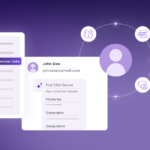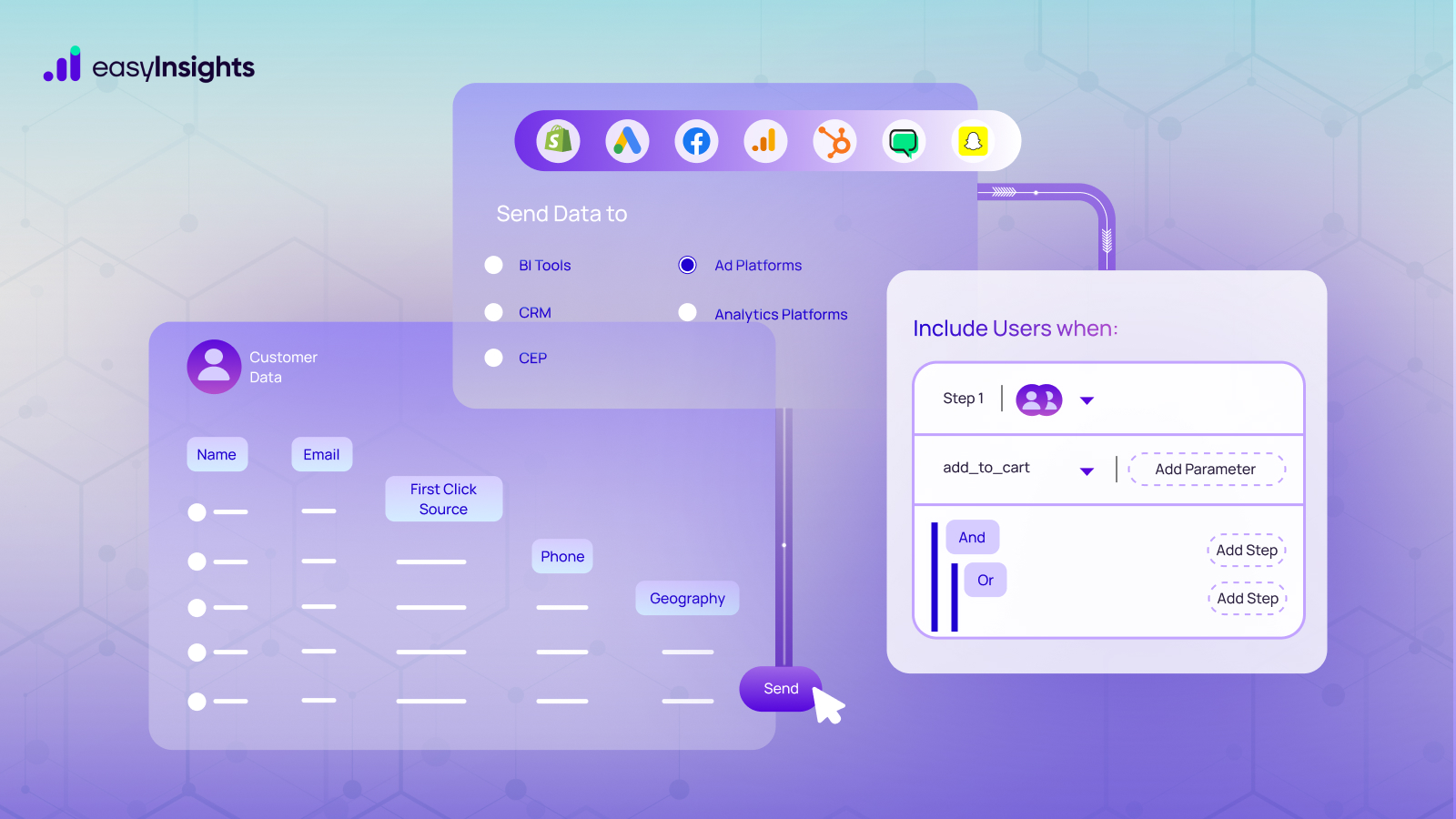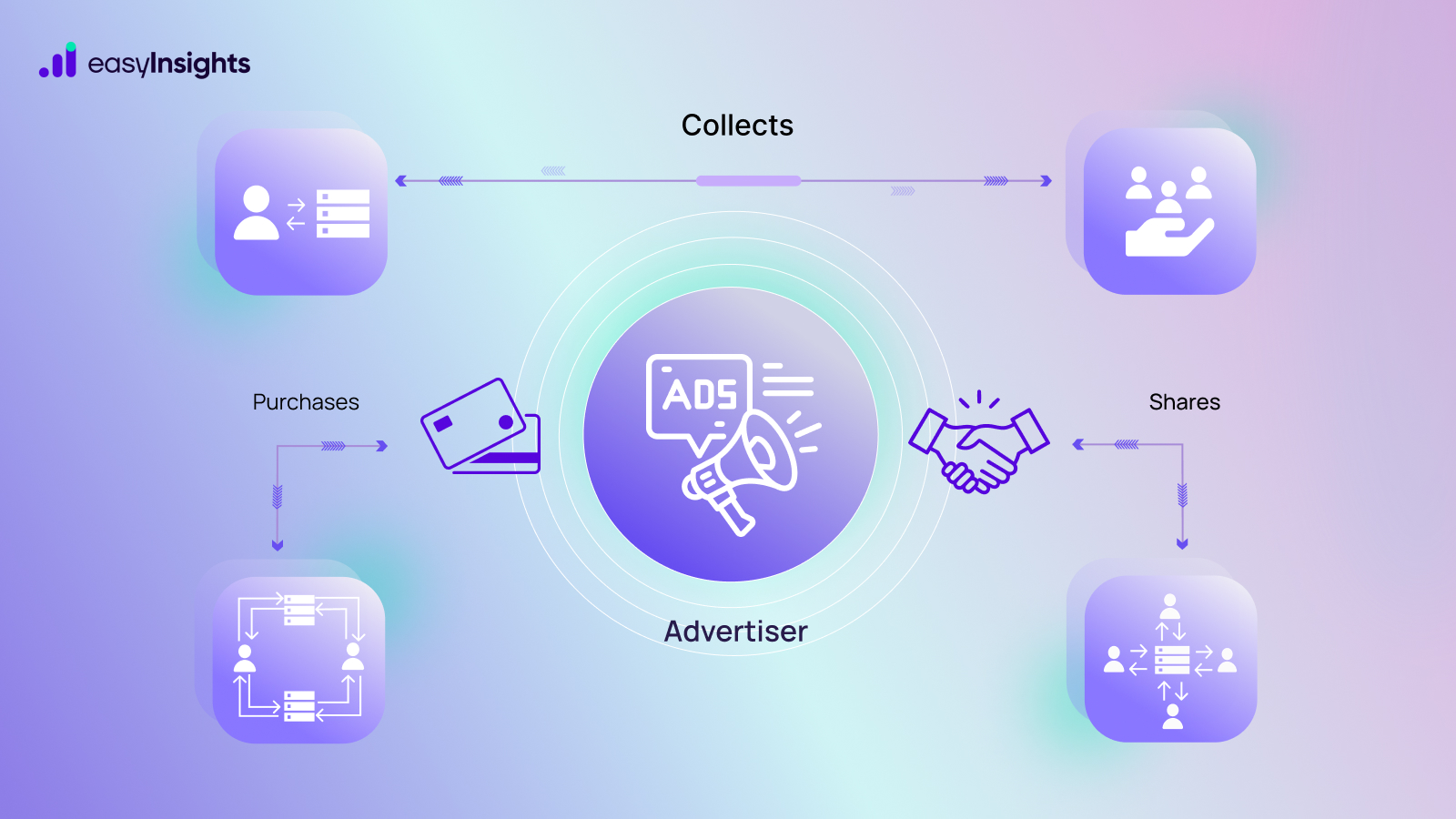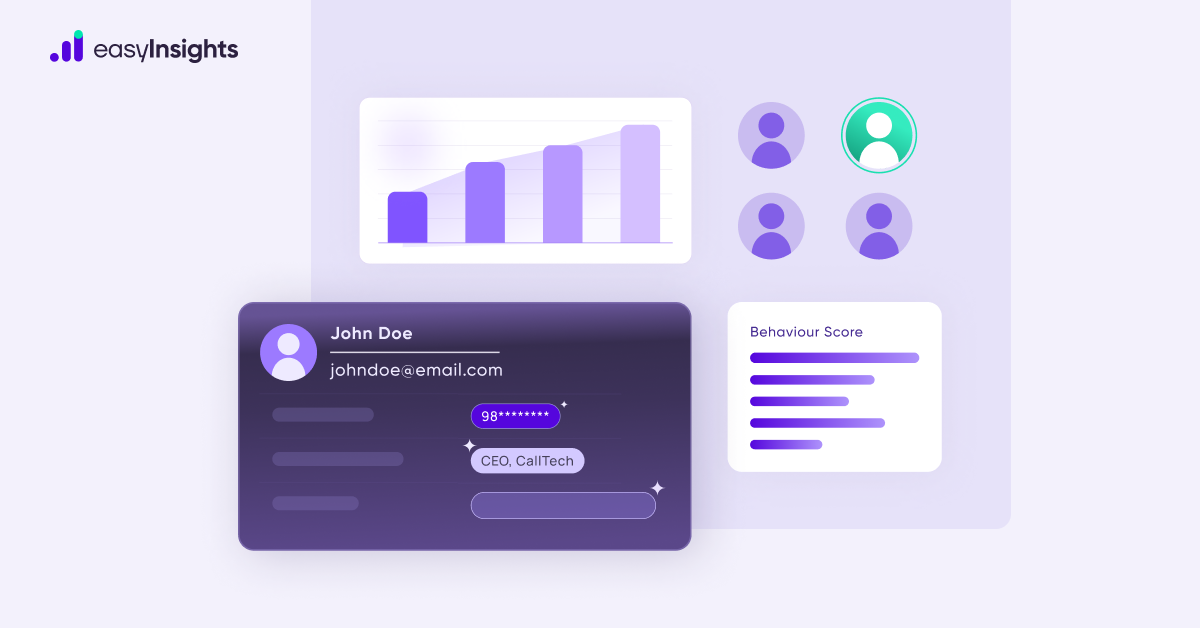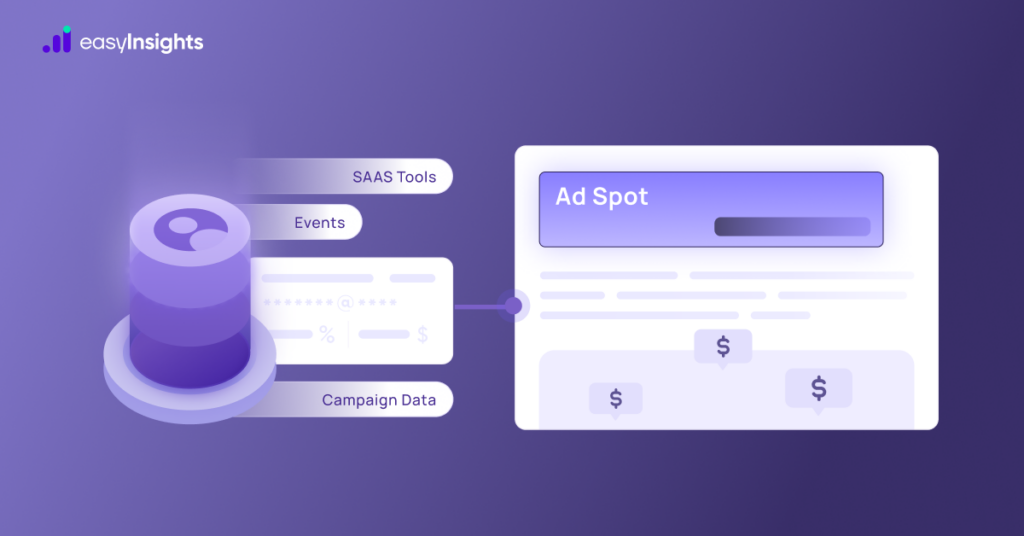
Programmatic advertising is on every marketer’s roster today. And there’s a good reason for that. Programmatic advertising uses technology and algorithmic tools to facilitate media buying. It relies on user signals to help feature ads to the right customers, in the right place and at the right time.
There’s no doubt programmatic advertising is a force to reckon with. But add first party data to the mix, and you have a formidable formula that can help you skyrocket your marketing and advertising efforts.
If you’re curious about what the combination of the two can help you achieve, you’re in the right place. Here, we discuss everything you need to know about using first party data in programmatic advertising.
Jump ahead to:
Types of Data
Before we go any further, let’s discuss the different kinds of data marketers work with:
- Zero Party Data: This is shared willingly and intentionally by the customers themselves. Examples of sources include new customer registration details, rating and ranking sliders, etc.
- First Party Data: This is collected by the company from its customers. Since it’s shared by customers themselves, this data is highly accurate and reliable. Examples of sources include customer support calls, website activity, etc.
- Second Party Data: This is first party data of a company that is sold to another. Usually, companies come to an agreement to share their respective first party data with each other to improve campaign performance.
- Third Party Data: This is sourced from entities that haven’t directly interacted with customers. It can be sourced from government agencies, e-commerce platforms, etc.
Amongst these, third party data is by far the least accurate. Further, with Google announcing war against third party cookies, third party data is on the decline as well.
Additional read: Google’s Third-Party Cookie Purge: It’s Time for Cookieless Marketing
First Party Data and Programmatic Advertising
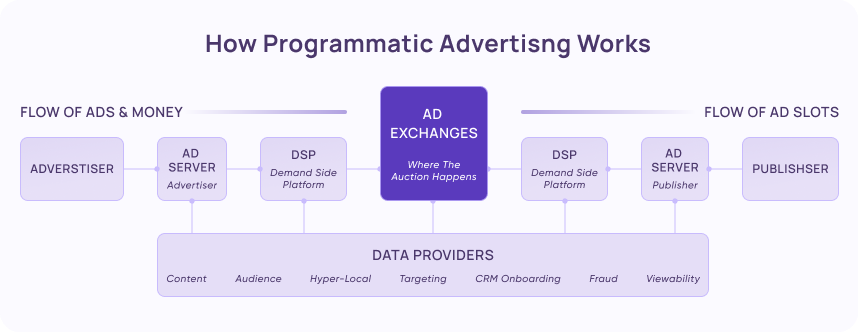
Research finds that highly data-driven organizations are 3x more likely to achieve significant improvements in decision-making over those that rely less on data. Today, data is everything. Planning campaigns blindly without reliable data to base your decisions on is a recipe for disaster.
Fortunately, first party data is the solution to all your problems. While this data can be significantly less in terms of quantity than third party data sets, it is miles ahead when it comes to accuracy and reliability.
This is because the customer shares this data willingly. First party data collection also allows you to gain more targeted information. You can design surveys, customer registration forms, and the like to source specific information that can directly improve your programmatic advertising efforts.
For instance, you can have a section on “Location” in your surveys to gather data on where your customers are. And then leverage this data to design hyper-personalized and relevant ads to customers based on where they live.
And that’s just the tip of the iceberg. Keep reading to learn how your first party data helps improve your programmatic advertising initiatives.
Benefits of Leveraging First Party Data in Programmatic Advertising
We don’t say it lightly when we say first party data in programmatic advertising is heralding a new era for marketers. Here are some of the benefits of first party data:
1. Greater Data Accuracy in Programmatic Advertising
First party data is highly accurate and reliable. Why? Because this is collected directly from the customer, who shares it willingly. Further, it can be verified easily with them in case a question of integrity is raised.
And when you base your programmatic advertising initiatives on accurate data, you create highly successful campaigns that truly resonate with your customers.
2. Improved Targeting for Programmatic Advertising
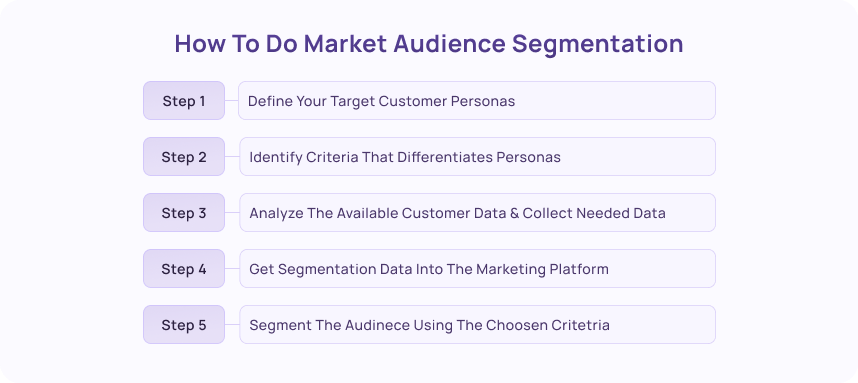
First party data allows you to target your audience precisely. You can segment your audience confidently based on behaviors, interests, location, etc., and feature ads that directly speak to them, increasing their chances of engagement and making a purchase.
Here are some examples of how first party data can facilitate better targeting:
- You can use this to bid on keywords and ad placements that offer a better chance of customer engagement
- You can use it to create custom audiences for improved targeting and drive conversion rates
3. Facilitates Greater Personalization in Programmatic Advertising
With reliable, updated, and accurate data, you can gain a deeper understanding of your customers. This can help you create hyper-personalized campaigns that are truly relevant to your audience.
For instance, let’s say you’re an apparel brand. Segmenting your audience based on location can help make your ads relevant to them. Ads for your audience in Hawaii can feature summer clothes, while customers in Alaska will see ads featuring scarves, coats, and the like.
Such personalization can improve your chances of them engaging with your brand and making a purchase.
Additional Reading: Audience Suppression – All You Need to Know
4. Deeper Insight into CLV
First party data also helps you learn how your customers interact with your brand across channels. This is crucial if you’re aiming to optimize your Customer Lifetime Value (CLV). You see, with first party data you can create extremely detailed profiles for every customer and use it to retarget them periodically.
Here are some of the targeted information you can extract from first party data:
- The average order values
- The average amount a customer typically spends over their lifetime
- The touchpoints clients engage with the most
5. Improved Understanding of the Customer Journey
Optimizing your customer journey means first having a complete understanding of how your customers interact with your brand every step of the way. By this, we mean knowing the stages of your customer journey and what nudges customers to the next stage.
With first party data, you get a granular view of your customers’ activities, helping you not only gain insight into their preferences, interests, and pain points but also forecast what could potentially pique their interest and motivate them to make a purchase.
6. Competitive Advantage
Lastly, first party data allows you to stay a step ahead of your competitors. You can leverage first party data to create detailed and precise buyer personas. While your competitors might have some of the same data, they definitely don’t have the deep insight you have with your first party data.
And without that, the chances of your competitor’s ad performing as well as yours are slim.
First Party Data Sources
Here are some of the most common sources for first party data that you can leverage to improve your programmatic advertising initiatives:
CRM Systems
Regardless of whether you have an offline or an online CRM, integrating it with your programmatic advertising platform can help you improve your campaign performance. Your CRM system holds data such as customer names, contact details, buying history, etc. Leveraging this data in your campaigns can help you target customers precisely and efficiently, increasing your conversion rates.
Subscriptions Sign-ups
Offering a newsletter subscription can help you gain more data from customers. You can update them on trending topics, discounts, upcoming events and the like in exchange for their details.
Surveys
Polls, surveys and quizzes are voluntary. This means that data gathered from these is willingly shared. Such mediums can help you gain insight into what your customers feel about your offering, their opinions, preferences, pain points, etc.
You can then use conclusions drawn from such data to make better-informed ad campaigns.
Programmatic Advertising and First-Party Data: Use Cases
Here are three B2B programmatic advertising strategies that can you take your campaigns to new heights:
1. Retargeting CRM Pipeline Leads
The leads in your sales pipelines are those customers that have already expressed interest in your offering. You can use programmatic advertising’s powerful capabilities to retarget these leads with personalized ads. This way, your brand will remain in their minds and nudge them towards a purchase.
Here are some ways to leverage this:
- Retarget your high-value customers and upsell to them
- Advertise a free, complimentary product or service to a specific segment of your customers
- Target lost customers who have canceled with you previously
- Advertise seasonal discounts and offers to customers who might not have made a purchase for a while
2. Contextual Advertising
Contextual ads are ads that are placed on websites based on the content on that website. For instance, for an activewear brand, a contextual ad would mean placing their ad on a website discussing workouts.
With these ads, your target audience sees relevant ads whenever they’re searching for topics that relate to your offering. This helps you gain leads and generate more web traffic.
3. Account-Based Retargeting
You can leverage first party data to retarget specific accounts. You can identify the IP addresses of the accounts that visited your website but didn’t make a purchase.
Retarget them with strategic, relevant, and personalized ads, and you might nurture that blooming interest into a solid conversion.
Additional read: How to use First Party data for your e-commerce brand
Final Thoughts
Programmatic advertising leverages software and algorithms to buy and sell ads. Bolstering this efficient method with first party data can be the difference between an average ad campaign and a successful one.
As discussed above, first party data brings a lot to the table, making it a no-brainer for marketers who want to stand out from the crowd in the ever-expanding and competitive space of advertising. However, there is one last step for you if you want to truly supercharge your marketing efforts.

And that’s integrating EasyInsights. This first party data activation and enrichment platform allows you to get every last drop of insight from your first party data. It helps you collect customer data from a variety of sources and collate it all into a Single Customer View (SCV). Not only that, but with EasyInsights, you can format data, fill missing gaps, and even enrich it with third party data. Supercharge your next ad campaign with EasyInsights!
To know more, visit the EasyInsights website and book a demo today!
Additional read: How Data Activation Will Transform Performance Marketing In 2024



